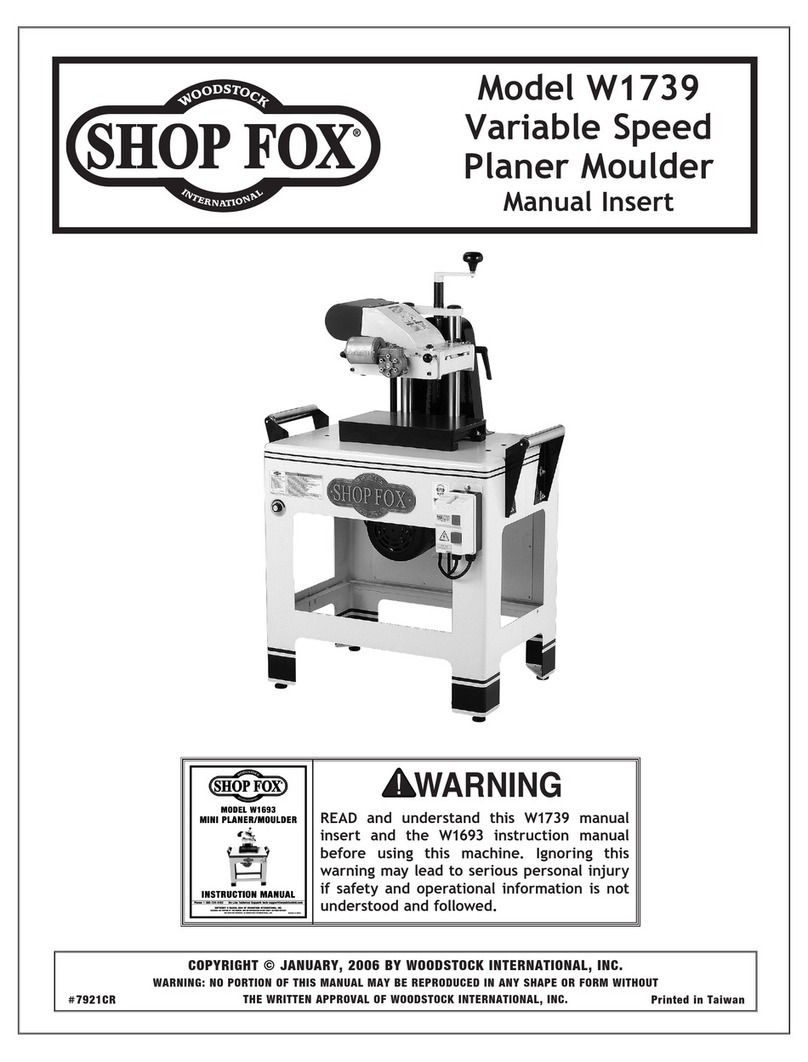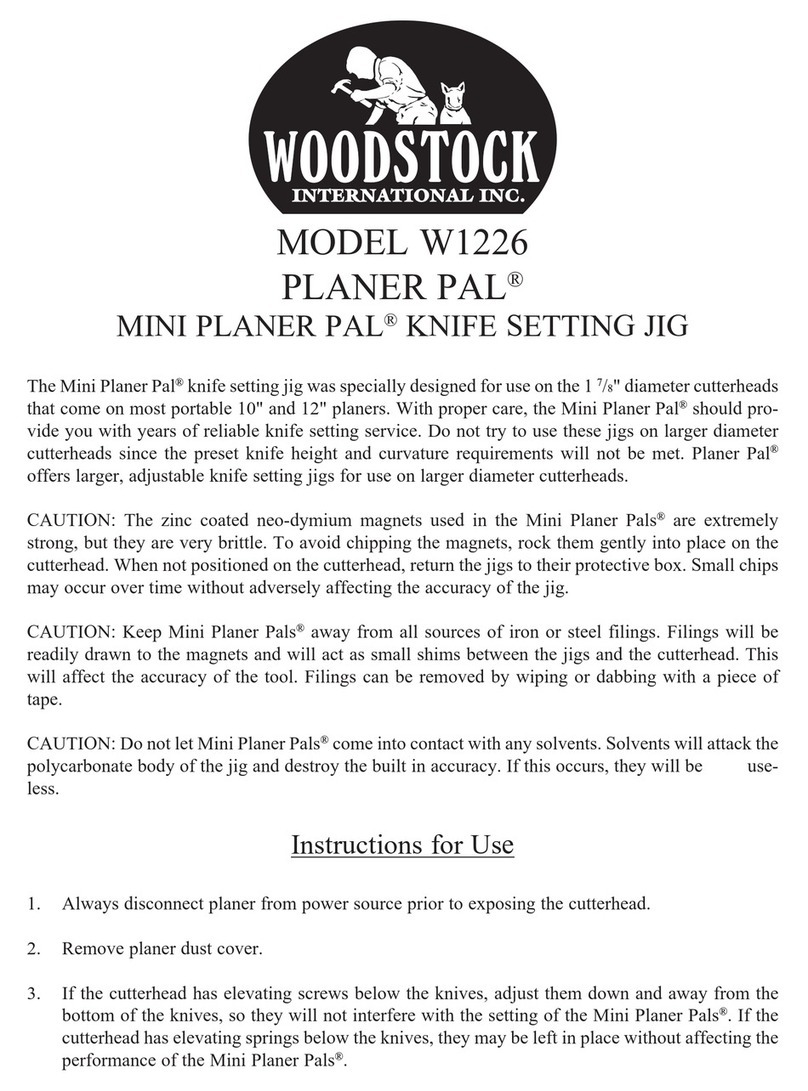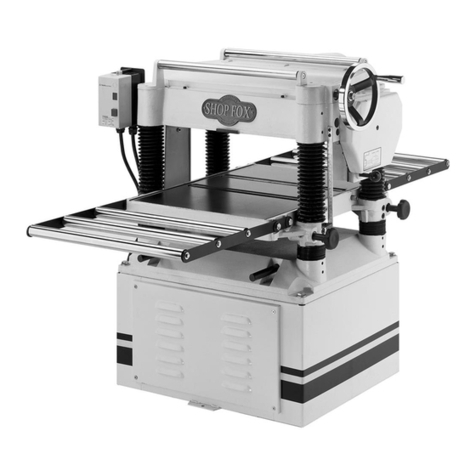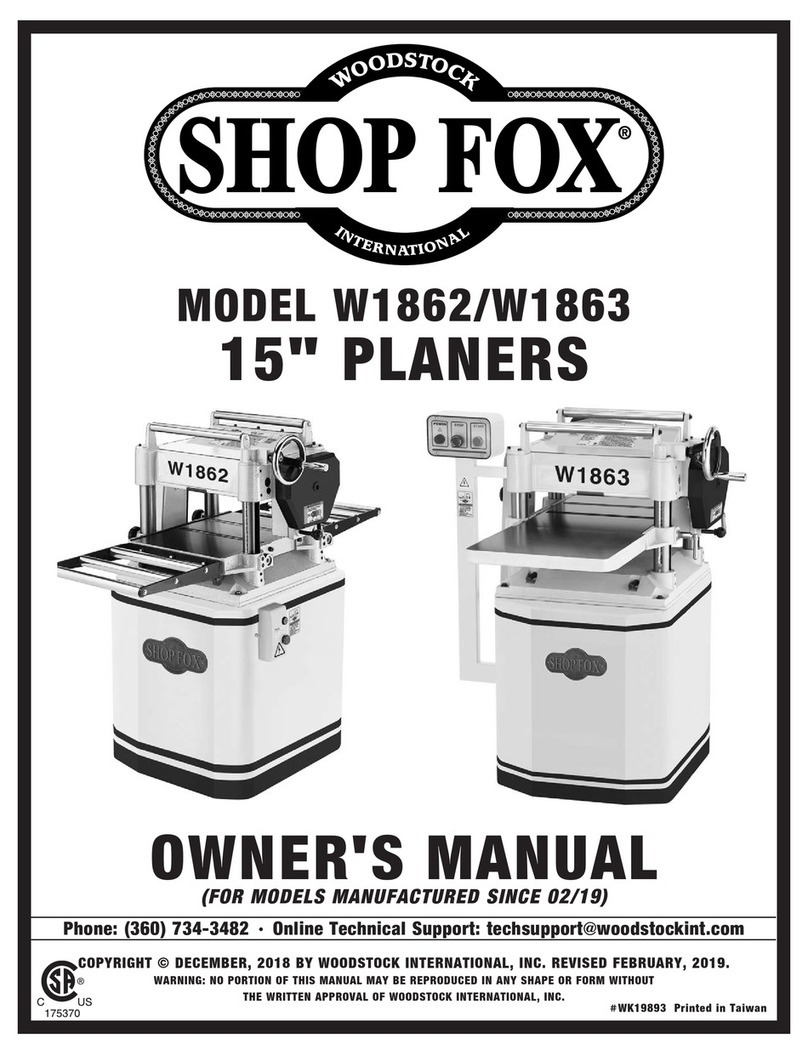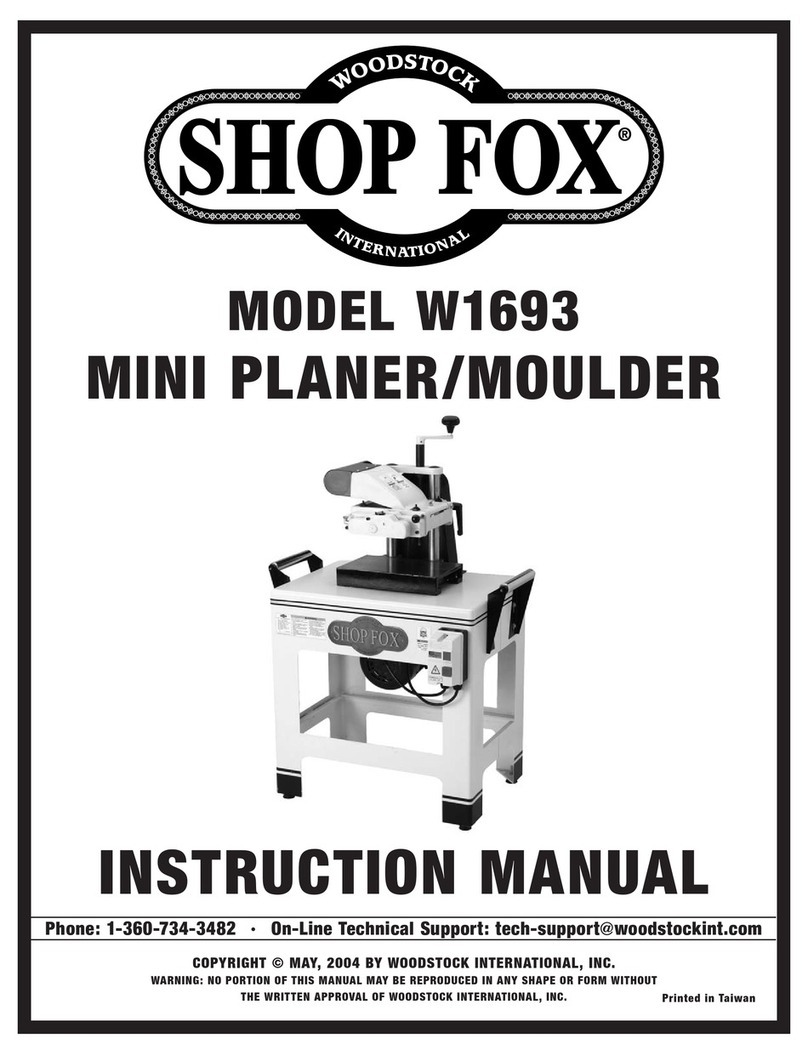
SETUPELECTRICAL MAINTENANCE SERVICE PARTS
OPERATIONS
SAFETYINTRODUCTION
USE THE QUICK GUIDE PAGE LABELS TO SEARCH OUT INFORMATION FAST!
INTRODUCTION .....................................2
Woodstock Technical Support .................. 2
Machine Specifications .......................... 3
Controls & Components ......................... 6
Internal Components ............................ 7
SAFETY ...............................................8
Standard Machinery Safety Instructions ...... 8
Additional Safety for Planers................. 10
ELECTRICAL ....................................... 11
Circuit Requirements .......................... 11
Grounding Requirements...................... 12
Extension Cords ................................ 12
SETUP .............................................. 13
Unpacking ....................................... 13
Items Needed for Setup....................... 13
Inventory ........................................ 13
Hardware Recognition Chart ................. 14
Machine Placement ............................ 15
Bench Mounting................................. 16
Assembly......................................... 17
Dust Collection ................................. 18
Test Run.......................................... 19
OPERATIONS....................................... 20
Operation Overview ........................... 20
Workpiece Inspection.......................... 21
Wood Types...................................... 21
Planing Tips ..................................... 22
Cutting Problems ............................... 22
Setting Depth of Cut........................... 24
Adjusting Table Alignment .................... 25
Feeding Workpiece ............................ 26
Rotating/Replacing Cutterhead Inserts ........27
ACCESSORIES ...................................... 29
Planer Accessories ............................. 29
MAINTENANCE .................................... 31
Schedule ......................................... 31
Cleaning & Protecting ......................... 31
Lubrication ...................................... 31
Cleaning Infeed & Outfeed Rollers .......... 33
Cleaning Feed Roller Brackets ............... 34
Tensioning/Replacing Drive Belt ............. 35
SERVICE ............................................ 36
General .......................................... 36
Calibrating Headstock Elevation Scale...... 36
Adjusting Cutterhead/Table Parallelism.... 37
Adjusting Cutterhead Lock Tension ......... 38
Calibrating Depth Stop Lever ................ 39
Replacing Motor Brushes ...................... 40
Troubleshooting................................. 41
Electrical Safety Instructions................. 43
Wiring Diagram ................................. 44
PARTS .............................................. 45
Main .............................................. 45
Labels & Cosmetics ............................ 48
WARRANTY ........................................ 49
Contents






